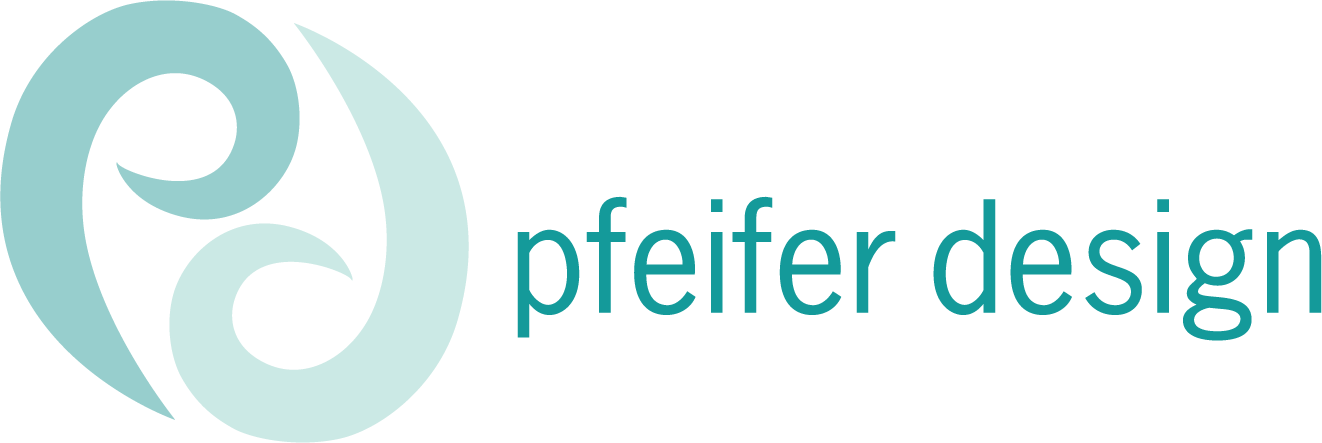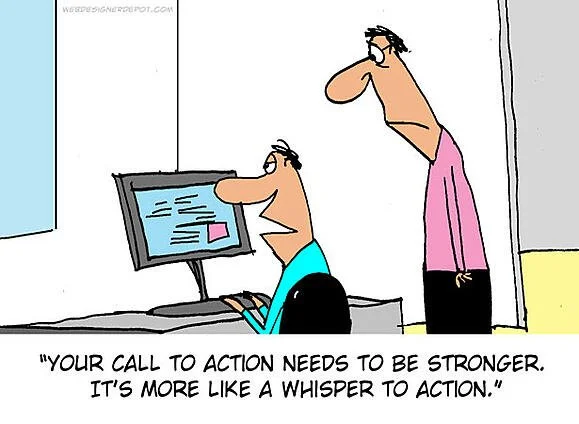Taking a Closer Look at Your Call to Action
Comic by Jerry King. Source: https://webdesignerdepot.com/comics-of-the-week-123/
A clear, well-crafted call to action (CTA) tells your audience exactly what to do next—and why they should do it. Without it, people can be left wondering, “What now?”
When crafting content, I think it’s important to consider the who, what, when, where why, and how - to make sure you are clearly presenting your message, and getting their interest. And then the next step is guiding them toward the action you want them to take. Here are some quick tips to improve your CTAs across different platforms and situations:
Be specific and action-oriented
Instead of “Contact us,” try:
“Schedule your free consultation today.”
“Call now to book your spot.”Highlight the benefit
What’s in it for them? For example:
“Download our free guide to save time on your next project.”
“Sign up now to get exclusive tips delivered weekly.”Keep it simple and easy to find
Make your CTA stand out visually in emails, flyers, or social posts—through buttons, bold text, or clear spacing.Remember in-person connections, too
For businesses relying on face-to-face interaction, your CTA might be an invitation to chat, visit, or experience your space—phrased warmly and invitingly, like:
“Stop by anytime—we’d love to meet you.”
“Feel free to ask me about today’s specials.”
Some examples below: (no I am not sponsored by TraderJoes, but I do adore their soup dumplings, and peanut butter cups!)
CTA from Trader Joe’s website, which clearly directs you to the next step they want you to take.
CTA from U Wisconsin instagram post, with graphics and caption that show clear steps toward engagement and information.
CTAs (Calls to Action) can appear in lots of places where you want to guide your audience toward the next step. Here are common spots where CTAs show up:
Websites: On homepages, product or service pages, contact pages, blog posts, pop-ups, banners, lead magnets, and checkout pages.
Emails and Newsletters: At the end of the message or within the content to encourage clicks or responses.
Social Media Posts and Stories: In captions, comments, story stickers, or bio links prompting likes, shares, comments, follows, or clicks.
Printed Materials: Flyers, brochures, posters, business cards, and direct mail pieces encouraging visits, calls, or visits.
In-Person Settings: Verbal invitations, signage, or handouts prompting conversations, visits, or bookings.
Ads: Online ads, print ads, and sponsored posts that encourage actions like clicking, calling, or purchasing.
CTAs help guide your audience whether they’re online or offline, reading, listening, or chatting with you in person. I now officially give you a CTA to work on your CTAs!




